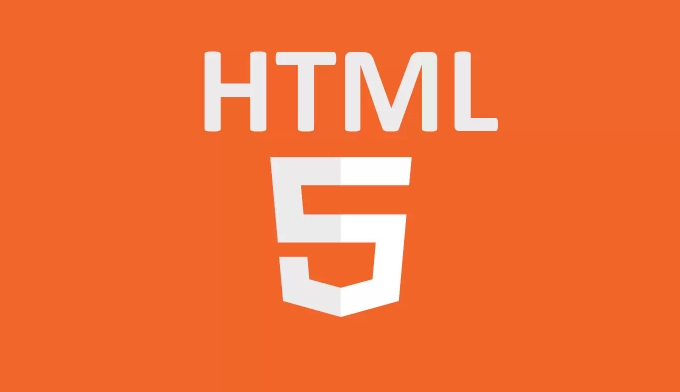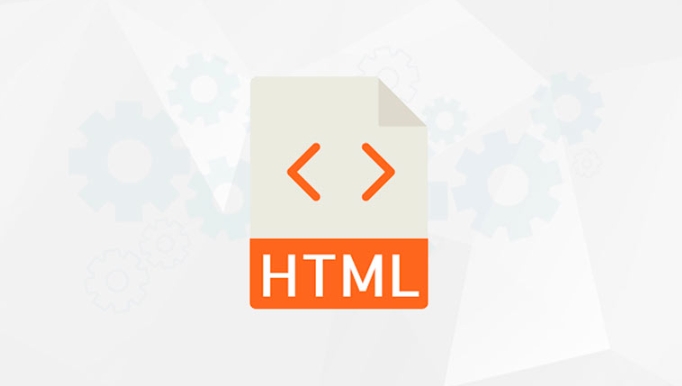<code> is used to inline code snippets, while <pre class="brush:php;toolbar:false"> is used to preserve formatted blocks of text. 1. <code> is suitable for small codes in sentences, displayed in monospace fonts by default, without retaining spaces and line breaks; 2. <pre class="brush:php;toolbar:false"> retains all whitespace characters and line breaks, suitable for multi-line code or text that needs to be kept in format; 3. Both can be used in combination to obtain semantic and format reservations at the same time; 4. Custom CSS styles are usually required to enhance the appearance. </pre>
 and <code> tags?"></p>
<p> The <code><code></code> and <code><pre class="brush:php;toolbar:false"> tags in HTML are both used to display code or preformatted text, but they serve slightly different purposes and behave differently in how they render content.
and <code> tags?"></p>
<p> The <code><code></code> and <code><pre class="brush:php;toolbar:false"> tags in HTML are both used to display code or preformatted text, but they serve slightly different purposes and behave differently in how they render content.
 and <code> tags?"> and <code>tags?" /> <h3 id="code-code-code-Tag-For-Inline-Code-Snippets-code"><code><code></code> Tag: For Inline Code Snippets</code></h3> <p>The <code><code></code> tag is meant for short snippets of code that appear within a paragraph or sentence. It tells the browser that the enclosed text is a piece of code, and browsers usually style it with a monospace font by default.</code></p> <p><strong>Example:</strong></p> <img src="/static/imghw/default1.png" data-src="https://img.php.cn/upload/article/000/000/000/175304070564482.jpeg" class="lazy" alt="What is the difference between <pre class="brush:php;toolbar:false"> and <code> tags?"> and <code>tags?" /> <pre class='brush:php;toolbar:false;'>In JavaScript, you can use <code>let x = 5;</code> to declare a variable.
and <code> tags?"> and <code>tags?" /> <h3 id="code-code-code-Tag-For-Inline-Code-Snippets-code"><code><code></code> Tag: For Inline Code Snippets</code></h3> <p>The <code><code></code> tag is meant for short snippets of code that appear within a paragraph or sentence. It tells the browser that the enclosed text is a piece of code, and browsers usually style it with a monospace font by default.</code></p> <p><strong>Example:</strong></p> <img src="/static/imghw/default1.png" data-src="https://img.php.cn/upload/article/000/000/000/175304070564482.jpeg" class="lazy" alt="What is the difference between <pre class="brush:php;toolbar:false"> and <code> tags?"> and <code>tags?" /> <pre class='brush:php;toolbar:false;'>In JavaScript, you can use <code>let x = 5;</code> to declare a variable. This will show the code inline with the rest of the text, and extra spaces or line breaks inside won't be preserved.
Use <code><code> when:
 and <code> tags?" /> and <code>tags?" /> <ul><li>You're showing a small part of code within a line of text</li> <li>You don't need to preserve whitespace or line breaks</li> <li>You want it styled differently from normal text but without breaking the flow</li></ul> <h3><code><pre class="brush:php;toolbar:false"></code> Tag: For Blocks of Preformatted Text</h3> <p>The <code><pre class="brush:php;toolbar:false"></code> tag stands for "preformatted." It preserves all whitespace, tabs, and line breaks exactly as written. This makes it ideal for displaying blocks of code, ASCII art, logs, or any text where formatting matters.</p> <p><strong>Example:</strong></p> <pre class='brush:php;toolbar:false;'><pre class="brush:php;toolbar:false"> function greet() { console.log("Hello!"); }
and <code> tags?" /> and <code>tags?" /> <ul><li>You're showing a small part of code within a line of text</li> <li>You don't need to preserve whitespace or line breaks</li> <li>You want it styled differently from normal text but without breaking the flow</li></ul> <h3><code><pre class="brush:php;toolbar:false"></code> Tag: For Blocks of Preformatted Text</h3> <p>The <code><pre class="brush:php;toolbar:false"></code> tag stands for "preformatted." It preserves all whitespace, tabs, and line breaks exactly as written. This makes it ideal for displaying blocks of code, ASCII art, logs, or any text where formatting matters.</p> <p><strong>Example:</strong></p> <pre class='brush:php;toolbar:false;'><pre class="brush:php;toolbar:false"> function greet() { console.log("Hello!"); } This will display the function exactly how it was typed, including indentation and new lines.
Use <code>
</code> when:</p> <ul><li>You have multiple lines of code or text</li> <li>You want to keep the original spacing and line breaks</li> <li>You're showing something like terminal output or configuration files</li></ul> <p>You can also combine them:</p> <pre class='brush:php;toolbar:false;'><pre class="brush:php;toolbar:false"><code> function greet() { console.log("Hello!"); } </code> This way, you get semantic meaning (via <code><code> ) and formatting preservation (via <code>
</code> ).</p> <h3>Styling Considerations</h3> <p>When using either tag:</p> <ul><li>Browsers apply default styles, but they're minimal</li> <li>You often need to add your own CSS for background color, padding, etc.</li> <li>Monospace fonts like <code>Courier New</code> or <code>Consolas</code> are common choices</li></ul> <p>Some basic CSS you might use:</p> <pre class='brush:php;toolbar:false;'>code { font-family: Consolas, monospace; background: #f0f0f0; padding: 2px 4px; border-radius: 4px; } pre { background: #2d2d2d; color: #fff; padding: 10px; overflow-x: auto; } That's basically it — <code><code> is for inline pieces, <code><pre class="brush:php;toolbar:false"></pre> is for blocks with formatting, and sometimes you'll use them together.
The above is the detailed content of What is the difference between and tags?. For more information, please follow other related articles on the PHP Chinese website!

Hot AI Tools

Undress AI Tool
Undress images for free

Undresser.AI Undress
AI-powered app for creating realistic nude photos

AI Clothes Remover
Online AI tool for removing clothes from photos.

Clothoff.io
AI clothes remover

Video Face Swap
Swap faces in any video effortlessly with our completely free AI face swap tool!

Hot Article

Hot Tools

Notepad++7.3.1
Easy-to-use and free code editor

SublimeText3 Chinese version
Chinese version, very easy to use

Zend Studio 13.0.1
Powerful PHP integrated development environment

Dreamweaver CS6
Visual web development tools

SublimeText3 Mac version
God-level code editing software (SublimeText3)
 How does React handle focus management and accessibility?
Jul 08, 2025 am 02:34 AM
How does React handle focus management and accessibility?
Jul 08, 2025 am 02:34 AM
React itself does not directly manage focus or accessibility, but provides tools to effectively deal with these issues. 1. Use Refs to programmatically manage focus, such as setting element focus through useRef; 2. Use ARIA attributes to improve accessibility, such as defining the structure and state of tab components; 3. Pay attention to keyboard navigation to ensure that the focus logic in components such as modal boxes is clear; 4. Try to use native HTML elements to reduce the workload and error risk of custom implementation; 5. React assists accessibility by controlling the DOM and adding ARIA attributes, but the correct use still depends on developers.
 Describe the difference between shallow and full rendering in React testing.
Jul 06, 2025 am 02:32 AM
Describe the difference between shallow and full rendering in React testing.
Jul 06, 2025 am 02:32 AM
Shallowrenderingtestsacomponentinisolation,withoutchildren,whilefullrenderingincludesallchildcomponents.Shallowrenderingisgoodfortestingacomponent’sownlogicandmarkup,offeringfasterexecutionandisolationfromchildbehavior,butlacksfulllifecycleandDOMinte
 What is the significance of the StrictMode component in React?
Jul 06, 2025 am 02:33 AM
What is the significance of the StrictMode component in React?
Jul 06, 2025 am 02:33 AM
StrictMode does not render any visual content in React, but it is very useful during development. Its main function is to help developers identify potential problems, especially those that may cause bugs or unexpected behavior in complex applications. Specifically, it flags unsafe lifecycle methods, recognizes side effects in render functions, and warns about the use of old string refAPI. In addition, it can expose these side effects by intentionally repeating calls to certain functions, thereby prompting developers to move related operations to appropriate locations, such as the useEffect hook. At the same time, it encourages the use of newer ref methods such as useRef or callback ref instead of string ref. To use Stri effectively
 Server-Side Rendering with Next.js Explained
Jul 23, 2025 am 01:39 AM
Server-Side Rendering with Next.js Explained
Jul 23, 2025 am 01:39 AM
Server-siderendering(SSR)inNext.jsgeneratesHTMLontheserverforeachrequest,improvingperformanceandSEO.1.SSRisidealfordynamiccontentthatchangesfrequently,suchasuserdashboards.2.ItusesgetServerSidePropstofetchdataperrequestandpassittothecomponent.3.UseSS
 A Deep Dive into WebAssembly (WASM) for Front-End Developers
Jul 27, 2025 am 12:32 AM
A Deep Dive into WebAssembly (WASM) for Front-End Developers
Jul 27, 2025 am 12:32 AM
WebAssembly(WASM)isagame-changerforfront-enddevelopersseekinghigh-performancewebapplications.1.WASMisabinaryinstructionformatthatrunsatnear-nativespeed,enablinglanguageslikeRust,C ,andGotoexecuteinthebrowser.2.ItcomplementsJavaScriptratherthanreplac
 Vue CLI vs Vite: Choosing Your Build Tool
Jul 06, 2025 am 02:34 AM
Vue CLI vs Vite: Choosing Your Build Tool
Jul 06, 2025 am 02:34 AM
Vite or VueCLI depends on project requirements and development priorities. 1. Startup speed: Vite uses the browser's native ES module loading mechanism, which is extremely fast and cold-start, usually completed within 300ms, while VueCLI uses Webpack to rely on packaging and is slow to start; 2. Configuration complexity: Vite starts with zero configuration, has a rich plug-in ecosystem, which is suitable for modern front-end technology stacks, VueCLI provides comprehensive configuration options, suitable for enterprise-level customization but has high learning costs; 3. Applicable project types: Vite is suitable for small projects, rapid prototype development and projects using Vue3, VueCLI is more suitable for medium and large enterprise projects or projects that need to be compatible with Vue2; 4. Plug-in ecosystem: VueCLI is perfect but has slow updates,
 How to manage component state using immutable updates in React?
Jul 10, 2025 pm 12:57 PM
How to manage component state using immutable updates in React?
Jul 10, 2025 pm 12:57 PM
Immutable updates are crucial in React because it ensures that state changes can be detected correctly, triggering component re-rendering and avoiding side effects. Directly modifying state, such as push or assignment, will cause React to be unable to detect changes. The correct way to do this is to create new objects instead of old objects, such as updating an array or object using the expand operator. For nested structures, you need to copy layer by layer and modify only the target part, such as using multiple expansion operators to deal with deep attributes. Common operations include updating array elements with maps, deleting elements with filters, adding elements with slices or expansion. Tool libraries such as Immer can simplify the process, allowing "seemingly" to modify the original state but generate new copies, but increase project complexity. Key tips include each
 Security Headers for Frontend Applications
Jul 18, 2025 am 03:30 AM
Security Headers for Frontend Applications
Jul 18, 2025 am 03:30 AM
Front-end applications should set security headers to improve security, including: 1. Configure basic security headers such as CSP to prevent XSS, X-Content-Type-Options to prevent MIME guessing, X-Frame-Options to prevent click hijacking, X-XSS-Protection to disable old filters, HSTS to force HTTPS; 2. CSP settings should avoid using unsafe-inline and unsafe-eval, use nonce or hash and enable reporting mode testing; 3. HTTPS-related headers include HSTS automatic upgrade request and Referrer-Policy to control Referer; 4. Other recommended headers such as Permis






